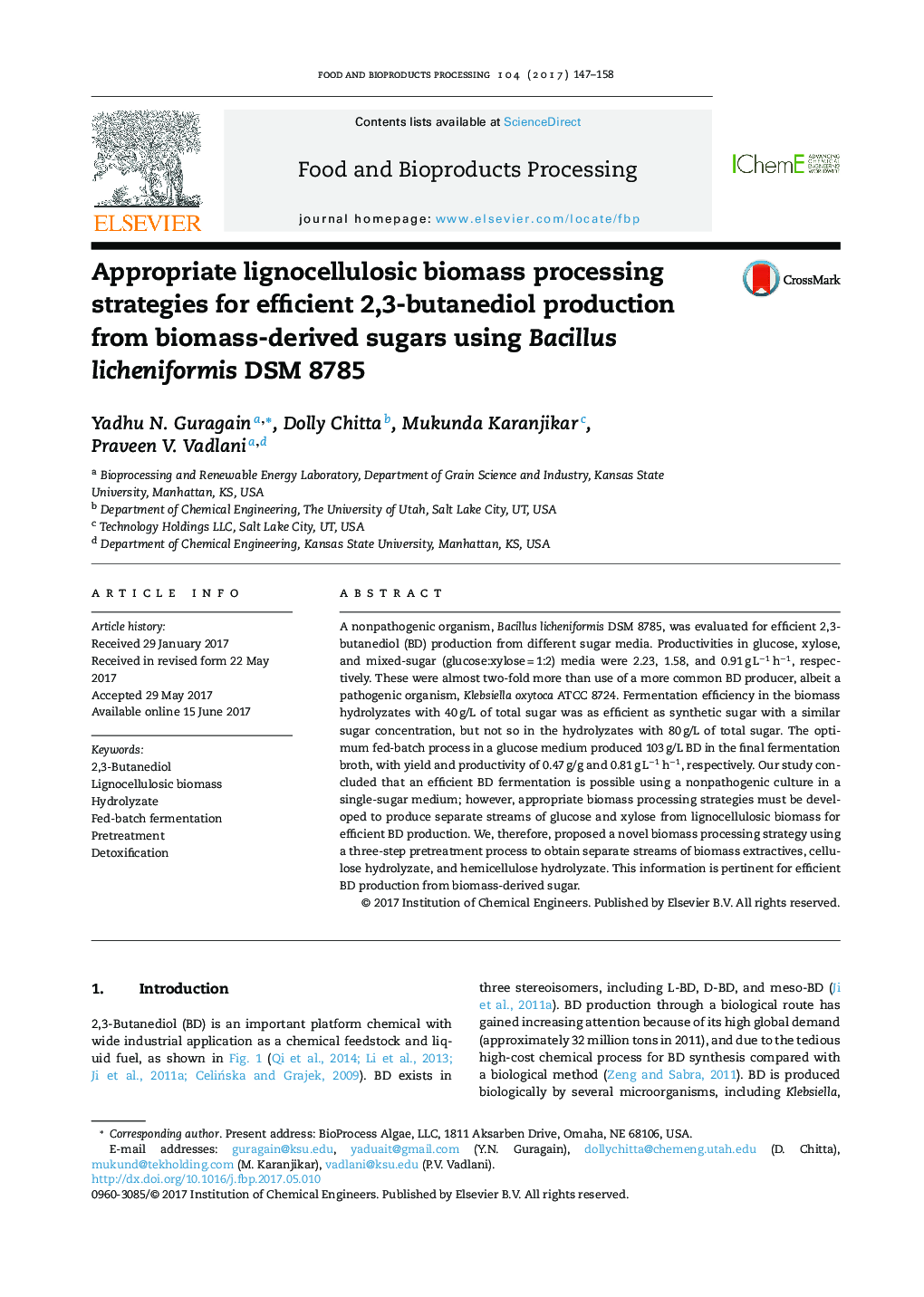| Article ID | Journal | Published Year | Pages | File Type |
|---|---|---|---|---|
| 4752940 | Food and Bioproducts Processing | 2017 | 12 Pages |
â¢A nonpathogenic organism was evaluated for 2,3-butanediol (BD) fermentation.â¢The results showed that BD can be efficiently produced using the nonpathogenic organism.â¢Mixed sugar medium was less efficient due to carbon catabolite repression.â¢Biomass hydrolyzate with high sugar concentration needs additional detoxification process.â¢Fed-batch process produced high BD titer (>10%, w/v) in glucose medium.
A nonpathogenic organism, Bacillus licheniformis DSM 8785, was evaluated for efficient 2,3- butanediol (BD) production from different sugar media. Productivities in glucose, xylose, and mixed-sugar (glucose:xylose = 1:2) media were 2.23, 1.58, and 0.91 g Lâ1 hâ1, respectively. These were almost two-fold more than use of a more common BD producer, albeit a pathogenic organism, Klebsiella oxytoca ATCC 8724. Fermentation efficiency in the biomass hydrolyzates with 40 g/L of total sugar was as efficient as synthetic sugar with a similar sugar concentration, but not so in the hydrolyzates with 80 g/L of total sugar. The optimum fed-batch process in a glucose medium produced 103 g/L BD in the final fermentation broth, with yield and productivity of 0.47 g/g and 0.81 g Lâ1 hâ1, respectively. Our study concluded that an efficient BD fermentation is possible using a nonpathogenic culture in a single-sugar medium; however, appropriate biomass processing strategies must be developed to produce separate streams of glucose and xylose from lignocellulosic biomass for efficient BD production. We, therefore, proposed a novel biomass processing strategy using a three-step pretreatment process to obtain separate streams of biomass extractives, cellulose hydrolyzate, and hemicellulose hydrolyzate. This information is pertinent for efficient BD production from biomass-derived sugar.
